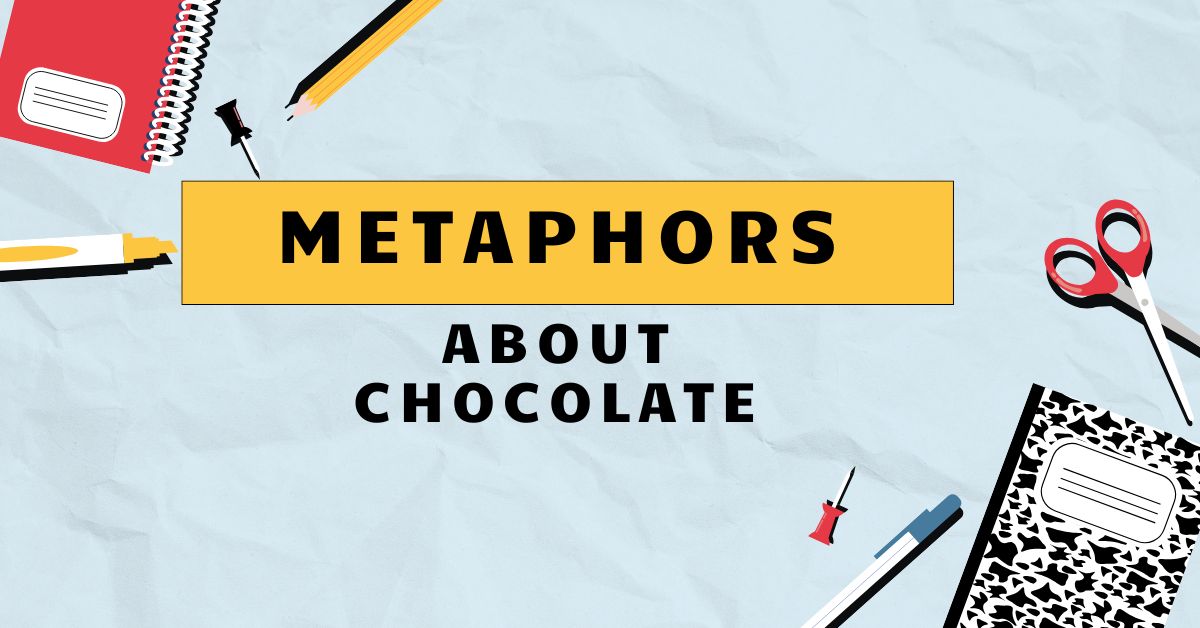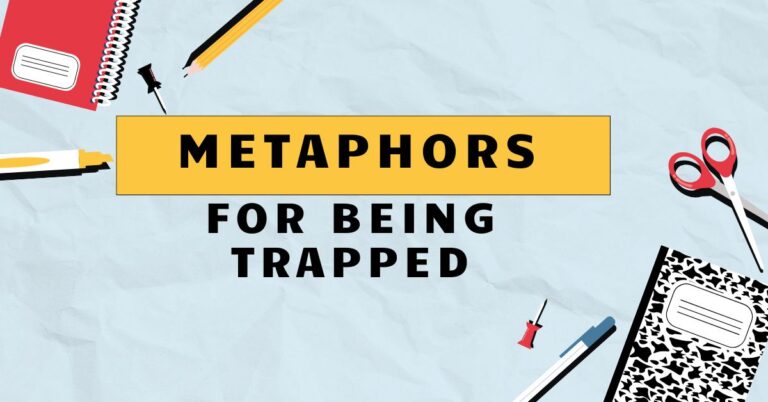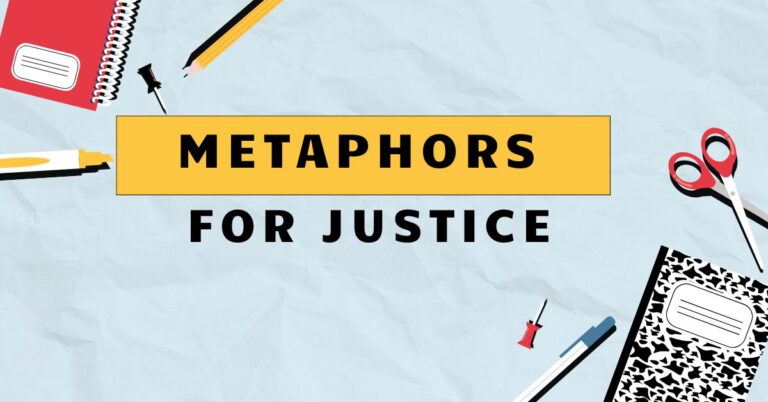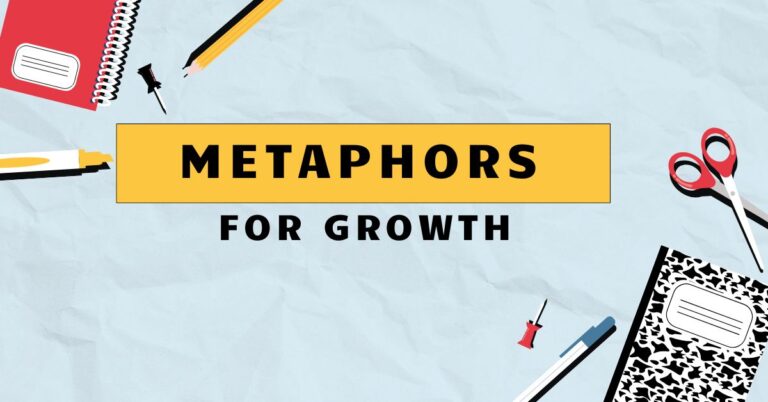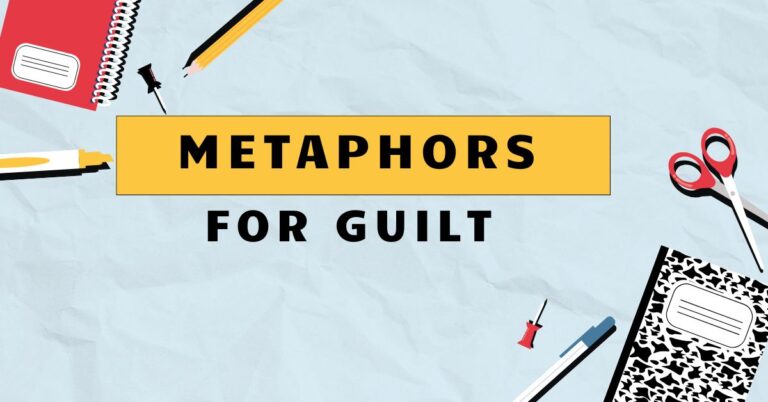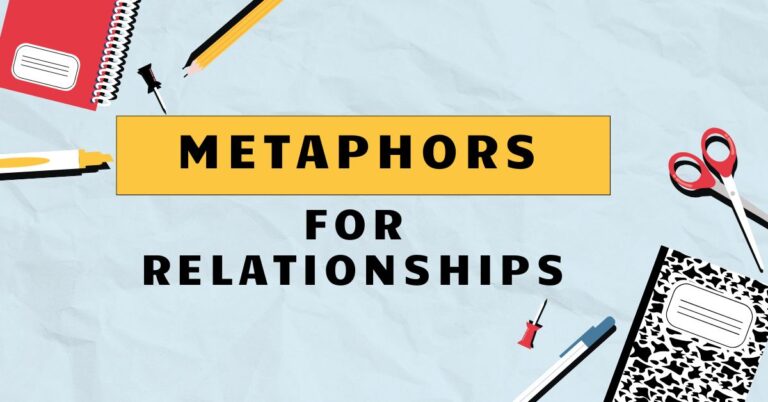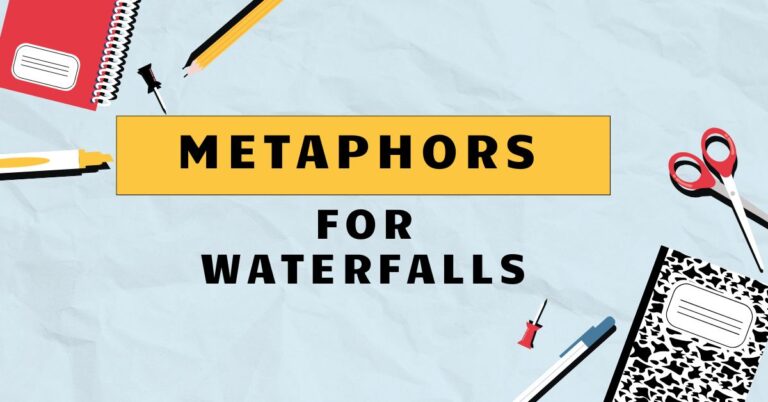41 Chocolate Metaphors: Sweeten Your Understanding of Language
Metaphors are powerful tools that enrich our language, adding depth and layers of meaning beyond the literal. Understanding how metaphors work is crucial for grasping nuanced communication and enhancing your own expressive abilities.
This article delves into the delectable world of chocolate metaphors, exploring how this universally loved treat is used to convey complex ideas and emotions. By examining various types of chocolate metaphors, their structures, and applications, we’ll unlock a sweeter understanding of English grammar and figurative language.
This comprehensive guide is designed for English language learners, writers, and anyone interested in enhancing their linguistic skills through the prism of chocolate.
Table of Contents
- Introduction
- Definition of Metaphor
- Structural Breakdown of Chocolate Metaphors
- Types of Chocolate Metaphors
- Examples of Chocolate Metaphors
- Usage Rules for Chocolate Metaphors
- Common Mistakes with Metaphors
- Practice Exercises
- Advanced Topics in Metaphorical Usage
- Frequently Asked Questions
- Conclusion
Definition of Metaphor
A metaphor is a figure of speech that directly compares two unrelated things, asserting that one thing *is* another, not just *like* another (which would be a simile). It works by transferring qualities or characteristics from one concept (the source) to another (the target), creating a new understanding of the target concept.
Metaphors are essential for adding color, depth, and creativity to language, allowing us to express abstract ideas in more concrete and relatable terms. The power of a metaphor lies in its ability to evoke imagery and emotional resonance that a literal statement could not achieve.
In the context of language and grammar, understanding metaphors is crucial for interpreting texts, appreciating literature, and crafting persuasive arguments. Metaphors are pervasive in everyday speech, literature, and even scientific discourse, making their comprehension an essential skill for effective communication.
By recognizing and analyzing metaphors, we can gain a deeper understanding of the speaker’s intent and the underlying assumptions that shape their message. Metaphors, therefore, are not mere stylistic devices but fundamental tools for shaping thought and communication.
Structural Breakdown of Chocolate Metaphors
Every metaphor, including those involving chocolate, comprises two key components: thetenor(or target) and thevehicle(or source). The tenor is the subject being described, while the vehicle is the concept used to describe it.
The connection between the tenor and the vehicle is theground, which refers to the shared characteristics or associations that make the comparison meaningful. Understanding these elements helps in analyzing and interpreting the intended meaning of a metaphor.
For example, in the metaphor “Her voice was chocolate,” the tenor is “her voice,” and the vehicle is “chocolate.” The ground could be the smoothness, richness, or sweetness associated with both. This implies that her voice is perceived as pleasant, comforting, and perhaps even indulgent.
Without identifying these components, the metaphor’s impact would be significantly diminished.
The effectiveness of a metaphor also depends on the audience’s familiarity with the vehicle. Chocolate, being a widely recognized and appreciated treat, serves as a potent vehicle for conveying various positive emotions and experiences.
However, cultural differences and individual preferences can influence the interpretation of the metaphor. Therefore, considering the context and audience is crucial when using or interpreting chocolate metaphors.
Types of Chocolate Metaphors
Metaphors can be categorized in several ways, each highlighting different aspects of how they function. Understanding these categories can help in both analyzing existing metaphors and creating new ones.
The following are some common types of metaphors, illustrated with examples related to chocolate.
Structural Metaphors
Structural metaphors are those where one concept is understood and expressed in terms of another, more structured concept. They shape the way we perceive and interact with the world by providing a framework for understanding abstract ideas.
For example, consider the structural metaphor “Life is a box of chocolates.” This metaphor uses the structured concept of a box of chocolates to understand the abstract concept of life. The “box” represents the limits of life, and the variety of chocolates represents the different experiences and choices we encounter.
This metaphor suggests that life is unpredictable and full of surprises, just like a box of chocolates where you never know exactly what you’re going to get.
Orientational Metaphors
Orientational metaphors use spatial relationships (up-down, in-out, front-back, etc.) to structure abstract concepts. These metaphors are often rooted in our physical experiences and help us understand abstract ideas in terms of concrete spatial orientations.
An example of an orientational metaphor involving chocolate might be “She’s on a chocolate high.” Here, “high” is associated with positive emotions and experiences, while the spatial orientation “up” is used to describe the feeling of euphoria or pleasure derived from consuming chocolate. This metaphor leverages our understanding of “up” as good and “down” as bad to convey the intense pleasure associated with chocolate.
Ontological Metaphors
Ontological metaphors treat abstract concepts as if they were concrete entities, substances, or containers. This allows us to quantify, locate, and interact with abstract ideas as if they were tangible objects.
This type of metaphor is useful for making abstract concepts more accessible and understandable.
For instance, “Chocolate is my escape.” This metaphor treats chocolate as a physical entity that provides a means of escaping from reality. It allows us to conceptualize chocolate as something that can contain or transport us away from our problems.
This metaphor is particularly effective because it relies on the common experience of seeking comfort and relief in chocolate.
Examples of Chocolate Metaphors
Chocolate metaphors are versatile and can be used to describe a wide range of experiences, emotions, and qualities. The following sections provide examples of how chocolate is used metaphorically to convey different meanings.
Chocolate as Pleasure
Chocolate is often used to represent pleasure due to its rich flavor and the sensory experience associated with eating it. This association makes it a powerful metaphor for describing enjoyable experiences.
The table below provides examples of sentences where chocolate is used as a metaphor for pleasure. Each example illustrates how the qualities of chocolate—such as its sweetness, richness, and smoothness—are used to describe pleasurable experiences or emotions.
| Example Sentence | Explanation |
|---|---|
| “His music was pure chocolate to my ears.” | The music is described as being as pleasurable and satisfying as chocolate. |
| “The vacation was a chocolate indulgence for her soul.” | The vacation provided deep satisfaction and pleasure, akin to indulging in fine chocolate. |
| “Her laughter was like a warm chocolate drizzle on a cold day.” | Her laughter is described as being comforting and delightful. |
| “Their love was a rich chocolate dessert, savored slowly.” | The love is described as intensely pleasurable and meant to be enjoyed thoroughly. |
| “Winning the lottery was a chocolate dream come true.” | Winning the lottery is portrayed as an incredibly pleasurable and fantastical experience. |
| “The success tasted like the finest dark chocolate.” | The feeling of success is described as being as rich and satisfying as high-quality dark chocolate. |
| “The concert was a chocolate symphony of sound.” | The concert is portrayed as a harmonious and pleasurable auditory experience. |
| “The award ceremony felt like a chocolate celebration of achievement.” | The award ceremony is described as a joyous and satisfying event. |
| “The romantic evening was a chocolate delight from start to finish.” | The entire evening is portrayed as being filled with pleasure and enjoyment. |
| “Her kind words were like a chocolate balm to my wounded spirit.” | Her words are described as being comforting and soothing. |
| “The feeling of accomplishment was a rich chocolate cake.” | The sense of achievement is described as being deeply satisfying. |
| “The dance was a chocolate swirl of grace and beauty.” | The dance is portrayed as being elegant and visually pleasing. |
| “The surprise party was a chocolate explosion of joy.” | The party is described as being filled with overwhelming happiness. |
| “The reunion was a chocolate reunion of old friends and fond memories.” | The reunion is portrayed as a sweet and enjoyable gathering. |
| “His compliments were smooth chocolate, melting my heart.” | The compliments are described as being flattering and delightful. |
| “The spa day was a chocolate escape from the daily grind.” | The spa day is portrayed as a luxurious and relaxing experience. |
| “The victory was sweet chocolate after years of hard work.” | The victory is described as a satisfying reward for effort. |
| “Her smile was a chocolate beacon of warmth and happiness.” | Her smile is portrayed as being inviting and joyful. |
| “The vacation was a chocolate dream, every moment perfect.” | The vacation is described as idyllic and supremely enjoyable. |
| “The movie was a chocolate feast for the eyes.” | The movie is portrayed as being visually stunning and pleasurable. |
| “The success tasted like warm, melted chocolate on a cold day.” | The success is described as comforting and immensely satisfying. |
| “His touch was like velvety chocolate, sending shivers down my spine.” | His touch is portrayed as being sensual and pleasurable. |
| “The experience was a chocolate-covered memory, forever sweet.” | The experience is described as being unforgettable and intensely pleasurable. |
Chocolate as Luxury
Due to its association with indulgence and special occasions, chocolate often serves as a metaphor for luxury. This is especially true for high-quality or artisanal chocolates.
The following table illustrates how chocolate is used to signify luxury in various contexts. The examples highlight the idea of something being rare, indulgent, and of high quality.
| Example Sentence | Explanation |
|---|---|
| “Her lifestyle was pure chocolate, filled with expensive tastes.” | Her lifestyle is described as luxurious and indulgent. |
| “The hotel room was a chocolate suite of opulence and comfort.” | The hotel room is portrayed as being lavish and luxurious. |
| “His car collection was chocolate-plated, each car a rare gem.” | His car collection is described as being exceptionally valuable and luxurious. |
| “The designer dress was a chocolate creation of elegance and style.” | The dress is portrayed as being exceptionally stylish and luxurious. |
| “The yacht was a chocolate palace on the sea.” | The yacht is described as being lavishly appointed and luxurious. |
| “Their wedding was a chocolate affair, every detail extravagant.” | The wedding is portrayed as being extremely lavish and luxurious. |
| “The art gallery was a chocolate showcase of priceless masterpieces.” | The art gallery is described as housing rare and valuable artworks. |
| “The jewelry collection was chocolate-encrusted, each piece a work of art.” | The jewelry is portrayed as being exceptionally valuable and luxurious. |
| “The private jet was a chocolate chariot, whisking them away to paradise.” | The private jet is described as a luxurious means of transportation. |
| “The penthouse was a chocolate haven of sophistication and style.” | The penthouse is portrayed as being exceptionally stylish and luxurious. |
| “The wine cellar was a chocolate vault of rare and vintage wines.” | The wine cellar is described as housing expensive and rare wines. |
| “The spa treatment was a chocolate experience, designed to pamper and rejuvenate.” | The spa treatment is portrayed as being a luxurious and indulgent experience. |
| “The vacation home was a chocolate retreat, nestled in the mountains.” | The vacation home is described as a luxurious and relaxing getaway. |
| “The concert tickets were chocolate passes to an exclusive event.” | The concert tickets are portrayed as granting access to a luxurious and exclusive experience. |
| “The antique furniture was chocolate-varnished, each piece a testament to history.” | The antique furniture is described as being valuable and luxurious. |
| “The garden was a chocolate paradise, filled with rare and exotic plants.” | The garden is described as being luxurious and filled with rare items. |
| “The library was a chocolate sanctuary of knowledge and wisdom.” | The library is portrayed as being a luxurious and valuable resource. |
| “The scholarship was a chocolate opportunity to pursue her dreams.” | The scholarship is described as a valuable and luxurious opportunity. |
| “The inheritance was a chocolate fortune, securing their future.” | The inheritance is portrayed as being a substantial and luxurious amount of money. |
| “The restaurant was a chocolate establishment, known for its impeccable service.” | The restaurant is described as being high-end and luxurious. |
| “His wardrobe was a chocolate collection of designer suits and bespoke shirts.” | His wardrobe is portrayed as being luxurious and filled with high-quality items. |
| “The art collection was a chocolate investment, appreciating in value every year.” | The art collection is described as being a valuable and luxurious asset. |
| “The country club was a chocolate enclave, exclusive and prestigious.” | The country club is portrayed as being a luxurious and exclusive community. |
Chocolate as Comfort
Chocolate is often associated with comfort, warmth, and solace. This association makes it a powerful metaphor for describing situations or experiences that provide emotional support or relief.
The table below presents examples of sentences where chocolate is used as a metaphor for comfort. These examples illustrate how the comforting qualities of chocolate—such as its warmth, sweetness, and familiarity—are used to describe situations or emotions that provide solace.
| Example Sentence | Explanation |
|---|---|
| “Her words were warm chocolate on a cold day.” | Her words provided comfort and warmth in a difficult situation. |
| “The friendship was a chocolate blanket, always there to provide comfort.” | The friendship is described as being a constant source of support and comfort. |
| “His presence was like hot chocolate on a snowy evening.” | His presence provided a sense of warmth and comfort. |
| “The memories were chocolate moments, bringing comfort in times of stress.” | The memories provided a source of comfort and nostalgia. |
| “The old book was chocolate for the soul, offering solace and escape.” | The book provided comfort and a means of escaping from reality. |
| “The music was chocolate therapy, easing the pain and lifting the spirits.” | The music provided emotional relief and upliftment. |
| “The quiet evening was chocolate for her frayed nerves.” | The quiet evening provided a sense of calm and relief from stress. |
| “The familiar routine was chocolate, a comforting constant in her life.” | The routine provided a sense of stability and comfort. |
| “The soft sweater was chocolate against her skin, offering warmth and security.” | The sweater provided physical comfort and a sense of security. |
| “The childhood home was chocolate, filled with comforting memories.” | The childhood home provided a sense of nostalgia and comfort. |
| “The gentle rain was chocolate for the parched earth.” | The rain provided relief and nourishment to the dry earth. |
| “The kind gesture was chocolate, warming her heart and easing her worry.” | The kind gesture provided emotional relief and comfort. |
| “The encouraging words were chocolate, bolstering her confidence and resolve.” | The words provided support and encouragement. |
| “The peaceful silence was chocolate, soothing her mind and relaxing her body.” | The silence provided a sense of calm and relaxation. |
| “The warm bath was chocolate, melting away the tension and stress.” | The bath provided physical and emotional relief. |
| “The supportive community was chocolate, offering strength and solidarity.” | The community provided a sense of belonging and support. |
| “The heartfelt letter was chocolate, expressing love and understanding.” | The letter provided emotional comfort and reassurance. |
| “The spiritual practice was chocolate, providing guidance and peace.” | The practice provided a sense of inner peace and direction. |
| “The therapeutic session was chocolate, helping her process her emotions.” | The session provided emotional support and healing. |
| “The afternoon nap was chocolate, restoring her energy and vitality.” | The nap provided physical and mental rejuvenation. |
| “The familiar scent was chocolate, triggering comforting memories of home.” | The scent evoked feelings of comfort and nostalgia. |
| “The supportive mentor was chocolate, offering guidance and encouragement.” | The mentor provided valuable support and advice. |
| “The quiet solitude was chocolate, allowing her to reflect and recharge.” | The solitude provided a space for introspection and renewal. |
Chocolate as Darkness/Bitterness
Dark chocolate, in particular, can be used to represent darkness, bitterness, or complexity. This is because dark chocolate has a more intense and less sweet flavor compared to milk chocolate.
The following table provides examples of sentences where chocolate is used as a metaphor for darkness or bitterness. These examples illustrate how the intense and less sweet qualities of dark chocolate are used to describe difficult or unpleasant experiences.
| Example Sentence | Explanation |
|---|---|
| “The truth was dark chocolate, bitter but necessary.” | The truth was unpleasant but essential to acknowledge. |
| “His anger was a dark chocolate storm, brewing and intense.” | His anger was described as being intense and potentially destructive. |
| “The memory was dark chocolate, a bitter reminder of the past.” | The memory was unpleasant and brought back painful feelings. |
| “The betrayal was dark chocolate, leaving a bitter taste in her mouth.” | The betrayal was described as being a deeply unpleasant experience. |
| “The reality was dark chocolate, a harsh contrast to her dreams.” | The reality was disappointing and far from ideal. |
| “The mystery had a dark chocolate center, complex and difficult to understand.” | The mystery was intricate and challenging to unravel. |
| “The challenge was dark chocolate, demanding strength and resilience.” | The challenge was difficult and required significant effort to overcome. |
| “The sacrifice was dark chocolate, costing her dearly but ultimately worth it.” | The sacrifice was painful but had a positive outcome. |
| “The secret was dark chocolate, hidden and potentially dangerous.” | The secret was concealed and could cause harm if revealed. |
| “The loss was dark chocolate, leaving a void that was hard to fill.” | The loss was deeply painful and difficult to cope with. |
| “The regret was dark chocolate, a constant reminder of her mistakes.” | The regret was a persistent and unpleasant feeling. |
| “The disappointment was dark chocolate, a sharp contrast to her expectations.” | The disappointment was intense and unexpected. |
| “The adversity was dark chocolate, testing her limits and pushing her boundaries.” | The adversity was challenging and forced her to grow. |
| “The hardship was dark chocolate, shaping her character and resilience.” | The hardship was difficult but strengthened her. |
| “The failure was dark chocolate, a lesson learned and a path forward.” | The failure was a valuable learning experience. |
| “The struggle was dark chocolate, demanding perseverance and determination.” | The struggle required significant effort and commitment. |
| “The conflict was dark chocolate, creating tension and unease.” | The conflict was unsettling and caused discomfort. |
| “The uncertainty was dark chocolate, making her anxious and uneasy.” | The uncertainty caused anxiety and apprehension. |
| “The fear was dark chocolate, gripping her heart and clouding her mind.” | The fear was overwhelming and debilitating. |
| “The pressure was dark chocolate, weighing heavily on her shoulders.” | The pressure was burdensome and stressful. |
| “The criticism was dark chocolate, hard to swallow but necessary for growth.” | The criticism was difficult to accept but beneficial for improvement. |
| “The rejection was dark chocolate, wounding her pride but strengthening her resolve.” | The rejection was painful but motivated her to persevere. |
| “The loneliness was dark chocolate, a constant companion in her solitude.” | The loneliness was a persistent and unpleasant feeling. |
Chocolate as Addiction
The addictive qualities of chocolate, due to its sugar and chemical composition, make it a suitable metaphor for describing dependencies or cravings.
| Example Sentence | Explanation |
|---|---|
| “His love for her was a chocolate addiction, he couldn’t resist her.” | His love for her was overwhelming and uncontrollable. |
| “The game was her chocolate, she played it obsessively.” | She was addicted to playing the game. |
| “Success became his chocolate, he craved it constantly.” | He was addicted to achieving success. |
| “Gossip was her chocolate, she couldn’t resist spreading rumors.” | She was addicted to gossiping and spreading rumors. |
| “The internet was his chocolate, he spent hours online every day.” | He was addicted to using the internet. |
| “Shopping was her chocolate, she bought things compulsively.” | She was addicted to shopping and buying things. |
| “The drama was their chocolate, they thrived on conflict and excitement.” | They were addicted to creating and experiencing drama. |
| “Social media was his chocolate, he constantly checked for updates and notifications.” | He was addicted to using social media. |
| “The thrill of gambling was her chocolate, she risked everything for the rush.” | She was addicted to the excitement of gambling. |
| “The attention was his chocolate, he sought validation from everyone.” | He was addicted to receiving attention and validation. |
| “The power was their chocolate, they manipulated others to maintain control.” | They were addicted to having power and control. |
| “The adrenaline was her chocolate, she sought dangerous and thrilling experiences.” | She was addicted to the rush of adrenaline. |
| “The competition was his chocolate, he thrived on rivalry and winning.” | He was addicted to competing and winning. |
| “The fame was their chocolate, they craved the spotlight and public recognition.” | They were addicted to being famous and recognized. |
| “The luxury was her chocolate, she indulged in expensive and extravagant items.” | She was addicted to living a luxurious lifestyle. |
| “The travel was his chocolate, he explored new places and cultures constantly.” | He was addicted to traveling and exploring new places. |
| “The learning was her chocolate, she devoured books and courses endlessly.” | She was addicted to learning and acquiring knowledge. |
| “The creativity was his chocolate, he expressed himself through art and music.” | He was addicted to expressing his creativity. |
| “The helping was her chocolate, she volunteered and supported others tirelessly.” | She was addicted to helping and supporting others. |
| “The exercise was his chocolate, he worked out rigorously to stay fit.” | He was addicted to exercising and staying in shape. |
| “The reading was her chocolate, she binged on books every night.” | She was addicted to finding comfort in a good book. |
| “The puzzles were his chocolate, he spent hours solving them.” | He was addicted to solving challenging problems. |
| “The gaming was her chocolate, she played for hours every day.” | She was addicted to playing video games. |
Usage Rules for Chocolate Metaphors
When using chocolate metaphors, it’s essential to consider the following rules to ensure clarity and effectiveness:
- Context Matters: Ensure that the metaphor is appropriate for the context and audience. A metaphor that works in one situation might not work in another.
- Clarity is Key: The connection between the tenor and the vehicle should be clear. Avoid metaphors that are too obscure or require extensive explanation.
- Avoid Clichés: Steer clear of overused metaphors that have lost their impact. Aim for originality and creativity.
- Consistency: Maintain consistency in the metaphor throughout your writing. Mixing metaphors can lead to confusion and weaken your message.
- Cultural Sensitivity: Be mindful of cultural differences and sensitivities when using metaphors. What is acceptable in one culture might be offensive in another.
Common Mistakes with Metaphors
Several common mistakes can undermine the effectiveness of metaphors. Here are some to avoid:
| Mistake | Incorrect Example | Correct Example |
|---|---|---|
| Mixed Metaphors: Combining metaphors that create contradictory images. | “He’s burning the midnight oil to climb the ladder of success, but he’s also sailing against the wind.” | “He’s burning the midnight oil to climb the ladder of success.” or “He’s sailing against the wind in his career.” |
| Clichés: Using overused and predictable metaphors. | “Life is like a box of chocolates.” | “Life is a complex recipe, blending sweet moments with bitter challenges.” |
| Obscurity: Using metaphors that are too abstract or difficult to understand. | “Her soul was a nougat of existence.” | “Her soul was a rich tapestry of experiences, woven with joy and sorrow.” |
| Inconsistency: Shifting the metaphor mid-sentence or paragraph. | “The project was a chocolate mountain, but we navigated it with ease, like a walk in the park.” | “The project was a chocolate mountain, requiring careful planning and persistent effort to overcome.” |
Practice Exercises
Test your understanding of chocolate metaphors with the following exercises.
- Identify the metaphor in each sentence and explain its meaning.
- Rewrite each sentence using a different metaphor.
- Create your own sentences using chocolate as a metaphor for the given concepts.
Exercise 1: Identifying Metaphors
| Question | Answer |
|---|---|
| “His words were smooth chocolate, melting her resistance.” | Metaphor: “smooth chocolate.” Meaning: His words were persuasive and charming. |
| “The city was a dark chocolate maze, full of hidden secrets.” | Metaphor: “dark chocolate maze.” Meaning: The city was complex and mysterious. |
| “Her talent was a chocolate gift, rare and exquisite.” | Metaphor: “chocolate gift.” Meaning: Her talent was exceptional and valuable. |
| “The opportunity was chocolate gold, too good to pass up.” | Metaphor: “chocolate gold.” Meaning: The opportunity was precious and valuable. |
| “Their friendship was a chocolate bond, sweet and unbreakable.” | Metaphor: “chocolate bond.” Meaning: Their friendship was strong and enduring. |
| “The challenge was a bitter chocolate pill to swallow.” | Metaphor: “bitter chocolate pill.” Meaning: The challenge was unpleasant but necessary to face. |
| “The experience was a chocolate dream, filled with joy and wonder.” | Metaphor: “chocolate dream.” Meaning: The experience was delightful and magical. |
| “The music was a chocolate river, flowing with emotion and passion.” | Metaphor: “chocolate river.” Meaning: The music was rich and evocative. |
| “The book was a chocolate escape, transporting her to another world.” | Metaphor: “chocolate escape.” Meaning: The book provided a means of escaping from reality. |
| “The victory was a sweet chocolate reward after years of hard work.” | Metaphor: “sweet chocolate reward.” Meaning: The victory was a satisfying outcome of effort. |
Exercise 2: Rewriting Metaphors
| Original Sentence | Rewritten Sentence |
|---|---|
| “His words were smooth chocolate, melting her resistance.” | “His words were honeyed silk, dissolving her defenses.” |
| “The city was a dark chocolate maze, full of hidden secrets.” | “The city was a labyrinth of shadows, concealing untold mysteries.” |
| “Her talent was a chocolate gift, rare and exquisite.” | “Her talent was a diamond gem, sparkling with brilliance.” |
| “The opportunity was chocolate gold, too good to pass up.” | “The opportunity was a golden ticket, an invitation to success.” |
| “Their friendship was a chocolate bond, sweet and unbreakable.” | “Their friendship was a steel chain, forged in loyalty and trust.” |
| “The challenge was a bitter chocolate pill to swallow.” | “The challenge was a thorny rose, painful but beautiful.” |
| “The experience was a chocolate dream, filled with joy and wonder.” | “The experience was a celestial symphony, resonating with harmony and awe.” |
| “The music was a chocolate river, flowing with emotion and passion.” | “The music was a tidal wave, surging with raw emotion and energy.” |
| “The book was a chocolate escape, transporting her to another world.” | “The book was a portal, whisking her away to fantastical realms.” |
| “The victory was a sweet chocolate reward after years of hard work.” | “The victory was a triumphant sunrise, illuminating the path forward.” |
Exercise 3: Creating Metaphors
| Concept | Chocolate Metaphor |
|---|---|
| Love | “Their love was like a decadent chocolate truffle, rich and irresistible.” |
| Success | “Success tasted like a smooth chocolate mousse, sweet and satisfying.” |
| Pain | “The pain was like bitter dark chocolate, lingering long after it was gone.” |
| Hope | “Hope was like a warm chocolate drink on a cold day, comforting and reassuring.” |
| Fear | “Fear was like a dark chocolate shadow, looming over her every thought.” |
Advanced Topics in Metaphorical Usage
For those looking to deepen their understanding and application of metaphors, here are some advanced topics to explore:
- Extended Metaphors: These are metaphors that are developed over several lines or paragraphs, creating a more complex and nuanced comparison.
- Mixed Metaphors: While generally to be avoided, skilled writers can sometimes use mixed metaphors intentionally for humorous or jarring effect.
- Conceptual Metaphors: These are underlying cognitive structures that shape our understanding of abstract concepts. Understanding these can help you create more resonant and meaningful metaphors.
- Dead Metaphors: These are metaphors that have become so common that they are no longer recognized as metaphors (e.g., “the leg of a table”). Understanding how metaphors can become “dead” can help you avoid using clichés.
Frequently Asked Questions
Conclusion
Metaphors are powerful tools for enriching language and enhancing communication. By exploring chocolate metaphors, we’ve seen how a familiar and beloved treat can be used to convey a wide range of emotions, experiences, and qualities.
Understanding the structure, types, and usage rules of metaphors can help you become a more effective and creative communicator. So go ahead, sprinkle some chocolate metaphors into your writing and sweeten your understanding of language!

